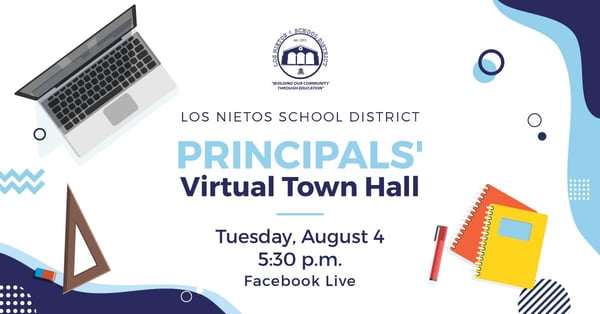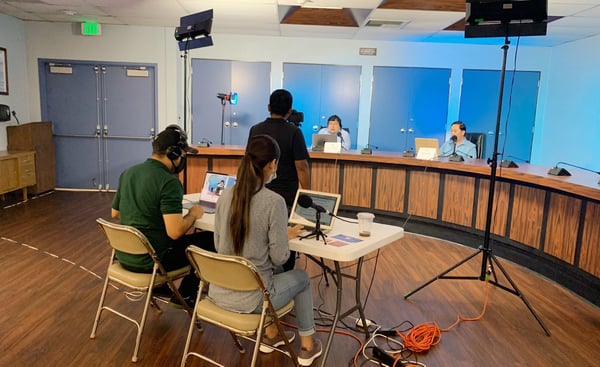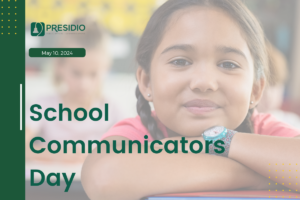No one was fully prepared to switch to remote learning last spring. This was especially the case for K-12 schools, since it’s challenging to keep younger students engaged. With students struggling to focus on school at home, many schools have tried to put on virtual events to lift their students’ spirits, but they face issues in event organization. Whether it’s struggling to manage a Zoom call or spreading the word, here are some tips and tricks to put on memorable virtual events that go off without a hitch.
INTERNET ACCESS
One of the most critical aspects of remote learning is making sure your audience has access to adequate internet and software. This issue was particularly dire during the initial months of remote learning. According to US Census data, 85.8% percent of students in households with incomes over $100,000 report having full online schooling. As household income decreases, so does the percentage of students with fully online materials as they may opt for physical curriculum. Many students had to attend class on a parent’s cell phone and receive their homework through WhatsApp. Some schools have been able to provide devices for children that requested one, but not all schools have had the proper funding to distribute devices.
If your district’s students have devices but need access to resources such as internet services, social and emotional health support, or even tutoring help, you can visit The Journal’s list of free resources for remote learning.
PRE-SHOW PRECAUTIONS
Your first step is to establish a time frame, platform, and information for the audience to distribute across email and social media. Establish base information such as whether you are using Zoom or Google Meet and when the event will occur. At this stage, you should organize any guests and set up a response team for any questions that arise.
Frequent posting across all of your social platforms is a powerful way to keep followers engaged and reminded of the event, and it promotes attendance. Social media and email distribution also allow anyone to ask questions directly and to address any concerns ahead of time.
To guarantee timely responses, designate a specific person to monitor and respond to questions. You can decide whether you will address questions or comments right away or save them for a designated section at the end of the seminar. This person can also monitor the event itself to handle any issues that arise and ensure that students are engaged.
While you’re preparing your messages, don’t forget that a good graphic can help promote your event and foster excitement in your school’s community. Here’s a graphic that Presidio made for one of our school client’s online events:

It’s essential to keep your social media graphics appropriate, concise, and informative. Try not to use too many “fluff” words. Get straight to the point of what the event is, when it is, and how to register or find more information. You can incorporate related images to your event for an added touch and use your school colors to get in the spirit.
PROPS TO YOU!
With school, work, and life all going remote during the COVID-19 pandemic, we’ve learned new ways to step up our online presence through helpful equipment. To up your production value without breaking the bank, you can purchase a ring light for your computer to provide speakers and hosts with ample lighting for their virtual presentations.
If the event consists of a panel or a group of people speaking in the same room as each other, make sure you are following COVID-19 protocols to keep everyone safe and set a good example for the audience. Each speaker should also have their own microphone to ensure that they are heard and understood when speaking and there is no delay in relaying a microphone.
Regardless of your event setting, you should test your equipment ahead of time with the people who will be participating. This way, you can anticipate and prevent technical issues. This preparation process can be as simple as practicing opening a Zoom call and setting up a presentation or making sure everyone is familiar and comfortable with their part in the event.

LIGHTS, CAMERA, ACTION
The time has come, your flyers are all over your school’s website, and you are ready to put on your event. Make sure to start with positive energy to encourage others to feel the same way. Your moderator, or host, can set the tone and provide direction and organization. They can introduce the speakers as well as the individuals asking questions. Depending on your audience, it might be helpful to have a bilingual moderator to cater to your audience’s needs.
If you are livestreaming the event, you need to check the broadcast quality. You can assure this by having someone on staff, in a separate room, watching the livestream to make sure the audio is clear and that the visuals aren’t lagging or glitching. This person can also monitor any comments or questions that come up and relay them to the event participants. This not only encourages the audience to ask questions if they have them but shows that they are valued as audience members when their concerns are addressed.
Make sure to address as many questions as possible, but pay particular attention to immediate concerns. These include technical difficulties, such as not being able to hear a speaker, and you should aim to resolve them as quickly as possible.
SHOW’S OVER!
You did it! Now that the event has concluded, it’s common courtesy to thank everyone that attended. You should also share a recording of your event on social media and in a follow-up email if possible so that those who could not participate in real time can watch later.
Don’t forget to ask for and monitor feedback from the audience to see if they enjoy that kind of event or if they have any concerns with the content shared. This will allow you to gauge what kind of events will do well in the future and what your audience would like to see from the school.

Online school events may not be ideal, but they do the crucial work of keeping your school’s community engaged and excited about learning even during these trying times. If you follow all of these steps to prepare, you can ensure that your event proceeds smoothly!
Sarah Kacmarsky contributed to this post.





